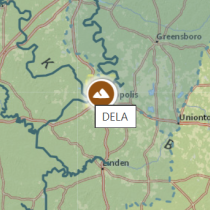Finding of No Significant Impact on NEON Environmental Assessment
December 15, 2009
In Fall 2009 NSF prepared an Environmental Assessment (EA) that evaluated the potential environmental and socioeconomic impacts associated with construction and operation of NEON, and invited public participation in the proposed federal action through the NEPA process. Based on the EA analysis and with the condition that appropriate project design features and best management practices would be implemented as needed and additional agency coordination would be completed where necessary, NSF has determined that the implementation of NEON would not result in significant impacts to the natural or human environment and would have no effect on public health and safety, land use, topography, hydrogeology and groundwater, demographics, and community resources in any of the 20 NEON Domains. NSF released the EA for public comments on its website starting August 30, 2009. It also held two public meetings, one in Arlington, VA on September 15, 2009, and the other in Boulder, CO on September 17, 2009. Both meetings were webcasted live with call-in lines, and remote participants were also encouraged to send questions via e-mail or an interactive chat screen. The public comment period ended September 28, 2009. NSF considered all comments, and as appropriate, the EA was revised to address those comments. Comments received and NSF's responses are included in the final EA document. Of NEON's 60 candidate core and relocatable sites, approximately 46% are on federal land, 20% on private university land, 16% on state land and another 18% on local government and private land.
